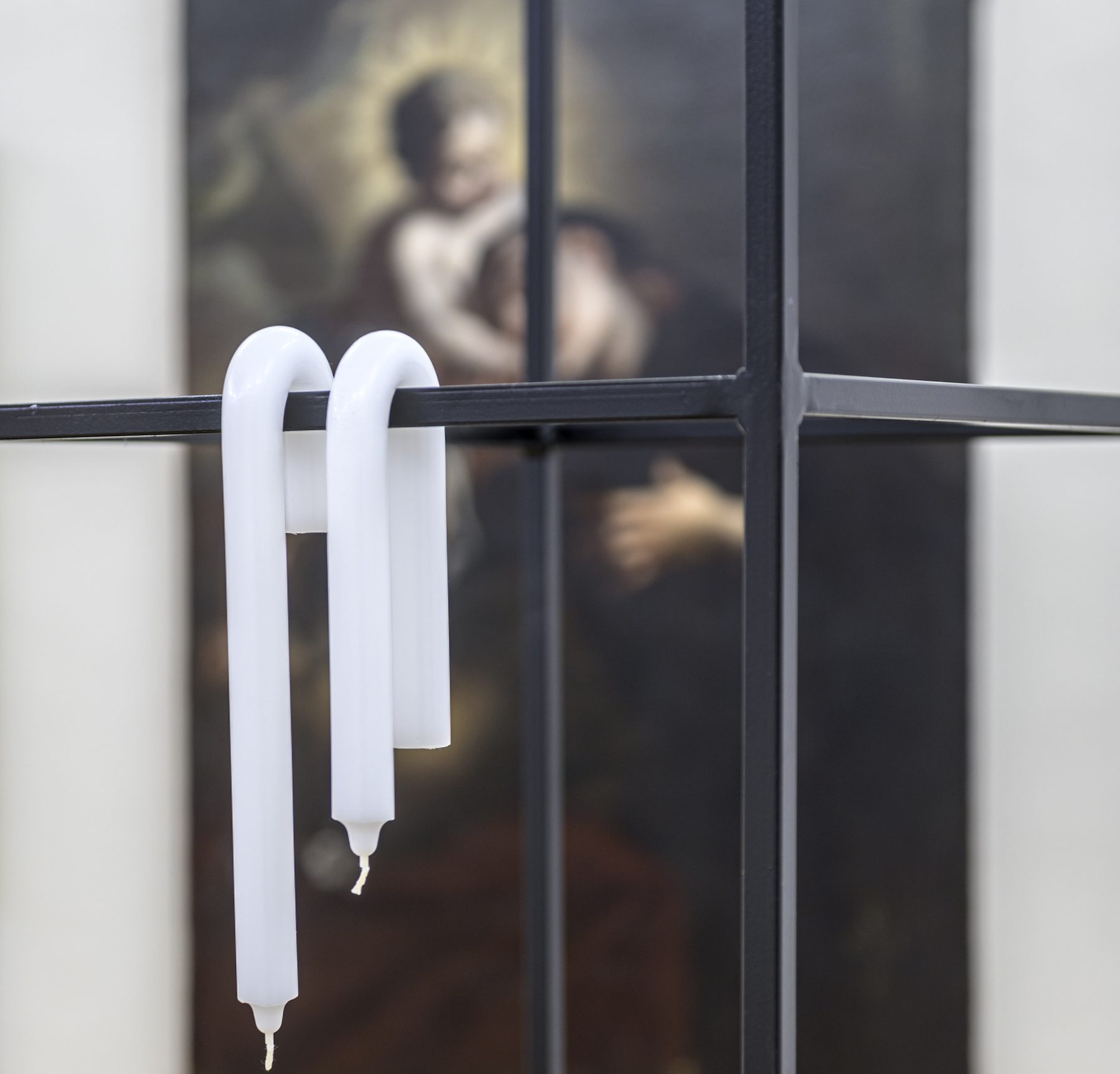Artists: Leontína Berková, Radek Brousil, Robert Gabris, Ján Gašparovič, Anetta Mona Chişa and Lucia Tkáčová, Nika Kupyrova, Jaroslav Kyša, Kristián Németh, Miroslav Pelák, Katarína Poliačiková, Terézia Tomková, and Ján Triaška; also of featured works from the collection of Ján Koniarek Gallery in Trnava
Title: Talking Hands
Venue: Ján Koniarek Gallery in Trnava, Slovakia
Curator: Michal Stolárik
Photo: Adam Šakový

We find the motif of hands in art history from the very first: the first prehistoric human handprints discovered in the Indonesian caves of Sulawesi; the symbolics and communicative power of hand gestures developed in medieval sacral art; the Renaissance showing us masterful scientific studies; and through Baroque “living” statues achieving an ideal imitation of realism in works of modern sculpture and painting. Hands and gestures in contemporary social history communicate political creeds; they are part of the symbolism of defiance, and the vernacular language of American street gangs and those with hearing impairments, as well as an essential part of today’s rap culture and cell phone entertainment on our smartphones’ touchscreens too. Contemporary visual art thus somewhat fetishizes physical as well as symbolic artistic gesture, taking it as the initiatory energy for a work’s genesis – whether in a pencil’s sketchbook motions or an intervention portion of performative art forms.
The curatorial project Talking Hands makes a selective study of hand motifs and the narrative potential of gestures in contemporary visual art, supplemented and confronted formally and ideationally with a selection from the collection of Trnava’s Ján Koniarek Gallery. In a natural way, the exhibition’s hybrid form brings together internal material from the collection and contemporary pieces from external sources. The goal is neither to use contemporary art to intervene in permanent collections, nor on the other hand to slip in small historical extracts to illustrate the context of recent years’ works. Rather, the recontextualization of the selected pieces from the mid-18th century to the 1990s concentrates on how they can be updated and rediscovered, by putting them into a dialogue with contemporary art.
The Talking Hands projects sees the human hand as the basis of nonverbal communication, an inseparable part of culture and society, and a foundational motif and formal agent for the media of drawing, painting, and sculpture. The exhibition’s conception makes use of thematic spheres, intuitively indicated by the selection of pieces from the Gallery’s collection. There is a natural transitioning from intimate depictions and carefree moments – leisure activities, experiments, games, and entertainment related to contemporary knowledge of digital behaviour, communication, and sexuality. It observes selected gestures as inherent symbols of political narrative, conflict and rebellion, violence, and death. Work that makes a theme of the hand is a frequent motif and a significant element of the artist (intervening), of the artistic gesture, or of questions relating to self-identification. Not least of all, gestures are an important part of sacral expression, and an ideational component in exploring current issues concerning religion, faith, and churches.
(boom! kapow! zap! crunch!)
The symbolic point of entry to the exposition and to the thematic line exploring the politics of the gestures used is a monumental canvas by Miroslav Pelák (b. 1992), whose paintings are typified by dynamic full-body compositions influenced by the aesthetic of comics, socialist realism painting, and Mexican muralism. His paintings portray strained situations featuring motifs of aggression, violence, and gender stereotypes, and comment on current socio-political topics. This multi-figure composition refers to a vicious incident in a Brussels prison, in which the Slovak Jozef Chovanec died after police brutality accompanied by fascist gestures and other crude behaviours. The smaller oil painting Garážový flex [Garage Flex] (2021) responds to themes of machismo and toxic masculinity, on which it comments by means of the life story of the Roma bodybuilder Adam Cibuľa.
Motifs of violence, fighting, grief, and suffering are reflected naturally in the selection of works from the Ján Koniarek Gallery collection. This focuses on artists’ reactions to the tragic fates of innocent people during the Second World War (by Emil Paulovič and Štefan Cpín) and the Spanish Civil War (Cyprián Majerník), followed chronologically by a change in political regime (Július Balogh, Ladislav Čemický) that is clearly legible in the expression and gestures of figures in selected pictures (Ladislav Čech) and sculptures (Vojtech Remeň).
The aesthetic of the installation Things in Our Hands (2014) by Anetta Mona Chişa and Lucia Tkáčová (who have collaborated since 2000) resembles an archaeological find in an imaginary museum exhibit. The abstract objects, of indeterminate function and origin, could easily serve as the first cutting or digging tools, though the sharp edges suggest a character more aggressive or defensive. Yet the objects’ organic forms and dark chrome colouring give the odd sense that they might have an extraterrestrial provenance or occult purpose. The abstract shapes that so awaken our imagination came about by melting down euro coins and then hand modelling, compressing, or distorting them. The little sculptures copying the form and details of human hands communicate the theme of the value of money, its meaning outside economic systems, and the relationship between what perishes and what endures. At another layer, it is interesting to observe the theme of the value of work (altered from the real value of the coins used into the artistic value of this work) and the inimitable principle of artists’ imprint and gesture.
(Work, work, work, work, work, work
He said me haffi
Work, work, work, work, work, work)
The exhibited portion of the extensive photographic installation Stisk rukou [Hands Clasped] (2015) by the Czech artist Radek Brousil (b. 1980) is devoted to the conceptualization of the photographic medium and its extension into space. The photographic objects focus on the main subject: hands that communicate, that create pressure, buttress, and shape decoratively carved soft material. Brousil, who in the past too has elevated and aestheticized studio work, here photographically captured and statically conveyed motion and transformation, reflected in the aestheticizing deformations and non-standard adjustments to photographs.
Artists’ gestures are perceived in the exhibited project mainly through the particular performative character by which the artists enter into everyday reality. The Terézia Tomková (b. 1999) video Touch of Society (2021) communicates the endeavour to join in the physical contact that was almost entirely prohibited to us over the past year. The coming together of two hands that could be a non-verbal greeting transforms to a symbolic as well as intimate dialogue between society and nature. The hand object modelled of amber glass, after touched by the artist, gradually deforms until it loses its original form. This sensitive probing of touch becomes a symbol of the ethereal and of the dominance of individualism.
This ideational line of intimate artist moments continues with (b. 1982) Katarína Poliačiková’s photographic series My Room Is a Sundial (2017). The almost identical selfies, between which are probably only short time intervals, convey time arrested, a documentation of an ephemeral situation and the discovery of inspiring moments within an ordinary reality in which sunbeams penetrating the room, a body and a single camera can transform into a sundial.
In his post-conceptual work, Jaroslav Kyša (b. 1981) engages with history, distorting reality symbolic possibilities, and the meanings of various materials. Though he currently works primarily with objects and sculptures, much of his portfolio consists of tiny performative gestures and personal interventions into common realities. The selection of works links the artist’s visible presence in simple situation with various artistic approaches: from interventions in public space as in the piece Work (2013), in which he covered part of the quotation on Karl Marx’s tomb to yield an apt comment on society and the operations of art, to a little distortion in perceived reality in Zatmenie eurom [1 Euro Eclipse] (2016), illustrating the topics of the value of work and economics. In his video Všetka váha sveta [All the weight of the world] (2016) we can observe the undisturbed functioning of gravitation, symbolically commenting on the heaviness of human existence or of personal experience.
The complementary selection of pieces from the Ján Koniarek Gallery collection, in contrast to the contemporary works, concentrates mainly on the ordinary essence of work, documenting work situations of diverse varieties. Motifs of industrial landscapes and figural compositions appear (by Ľudovít Križan and Emil Paulovič), and of unusual, even portrait-like, scenes of female crane operators (Hilda Hyllová), contrasting rural compositions showing collection of firewood (Ľudovít Varga) or shucking corn (Andor G. Horváth) and a romanticizing scene of florists (Jozef Trepáč). There is a symbolic “closing of the circle” in the exhibited cast of the sculptor Ján Koniarek’s right hand by Ladislav Snopko as an homage to sculpting and to the artist after whom the gallery was named.
(Experiments, hands up, and double taps)
A natural counterpoint to theme of work comes in motifs of free-time activities, recreation, and getting through a normal day (by Veronika Rónaiová). In addition to intimate everyday scenes, such as bathing (Ernest Špitz) or a view of a nursing woman (Jozef Trepáč), it is interesting to observe the differing depictions of men and women in recreation and friendly encounters. Where women adhere to social decorum (Ladislav Čech), men under the influence of alcohol (literally) slip to society’s periphery (Ľudovít Varga, Ludvík Dobeš).
In her spatial installation Otis Rem (2017 – 2021), Nika Kupyrova (b. 1985) sensitively developed narratives of found objects, appropriating their forms and modifying their original functions, while selectively zeroing in on hand and gesture motifs, which she unfetters from various sources of inspiration. The arranged objects combine elements of a pseudomagical atmosphere, symbolism, illusion, allusion, and personal mythology. The individual segments captivate our perception, creating a sense of familiar situations, shapes, and materials. And this very minute deconstruction and reconstruction of furniture, abbreviated information, and hinted mystification (references to divination, enigmatic fingerprints, pseudomythological artefacts…) all create an imaginary mental map of associations and stimulate personal fancy.
A simple video-installation of two separate works by Ján Gašparovič (b. 1981) brings out the artist’s natural interest in proceduralism, experimentation, and science. Though it may seem we are being shown amateur experiments, the very analytical approach, and the examination of chemical processes and investigating physics, are a striking part of his artistic exploration. The selected videos are linked by a performative do-it-yourself experimentation, presented through simple, minimalistic videosequences. The piece Pekelný kamienok [Infernal Stone] (2013) depicts the accelerated decomposition of silver nitrate crystals, which break down under light and in contact with organic material, creating a temporary chemical stain on skin. He also applied the principle of chemicals acting on his own body in the work Phantom Limb (2017), in which he applied a blackish purple permanganate solution to “amputate” his little finger.
The photographic wall covering Separácia dôvery [Separation of Trust] (2018), extracted from a larger exhibition project by Kristián Németh (b. 1983), is the survey’s visual and ideational centre. The artist, whose work is characterized by joining intimate themes with universal content, often employs simple gestures that communicate his personal interests. The ephemeral situation is intentionally overplayed and, besides illustrating dissipating trust (hanging by a thread), symbolizes more general themes such as fear, overarching power, and frailty, as well as sexuality and sensuality, present in the form of bodily fluids that are not specifically identified.
Quick swipes over displays, double taps, and simple gestures of shifts to the forefront or background. Automated touches of fingers on smartphone displays have become a full-fledged part of reality and an expanded language of interpersonal communication. The visual artist Robert Gabris (b. 1986), who works in Vienna, has in a series of rigorous drawings Cyberlove 2 (2020) illustrated and revealed the environment of online dating apps and social networks. In a gentle, indeed in some cases even playful form, he comments on how sex chats work, and on clichés in the online gay world, while also bringing attention to topics of loneliness, selfishness, and a life in isolation
Leontína Berková (b. 1992) concentrates her artistic interest on exploring the medium of photography. Using the forms of spatial installations or videoprojections, she probes the limits of this originally flat medium. The central motif of her older work Premena materiality [Changing Materiality] (2016) is the well-known hand that guides us automatically to the context of mobile phone user behaviour. In this multimedia installation, she works with questions of digitizing the photographic medium and people’s expanded interest in everyday documenting of their immediate surroundings. Apart from the change in how we hold cameras (or rather mobiles), she also observes the context of how a photograph comes about and the relationships between depicting and analysis of the depicted.(OMG)
Making the sign of the cross, praying, liturgical gestures, and Christian iconography. Communicating hands have an incomparable place in the sacral world. The final portion of the Talking Hands exhibition project thus naturally was given to the narrative of gestures in religious art, and pictures from the Ján Koniarek Gallery collection feature a number of basic motifs, such as the stigmata on Christ’s hands, a gesture of preaching, and hands holding attributes of saints.
Contemporary art often approaches themes of religion and faith from a critical standpoint, endeavouring to remark on the out-datedness of dogmatic rules. One who has in his work given ongoing attention to institutional criticism of the Christian church is the aforementioned Kristián Németh (b. 1983). The photo-installation Deformation (2011) and spatial objects Vatikánsky archív [Vatican Archive] (2019) have in common work with candle motifs. The deformed candles torn from the context of First Communion represent individuals’ vulnerability and unconscious bending to the canon of Church authority, while also responding to the Church’s moral deformation in its grappling with sexual scandals.
Ján Triaška (b. 1977) created a monumental site-specific painting in the gallery space, throwing into contrast two approaches in how to look at spiritual life. Through a simple black acrylic painting he appropriated well-known historical motifs, which in Christianity glorify suffering, and in Hinduism refer instead to a positive and healing message. Triaška’s studies of hands, which function on the principle of contrast and mutual negation of individual gestural symbols, at the same time express the artist’s outlook on specific phenomena of contemporary society and culture. (Will you be swiping left or right?)

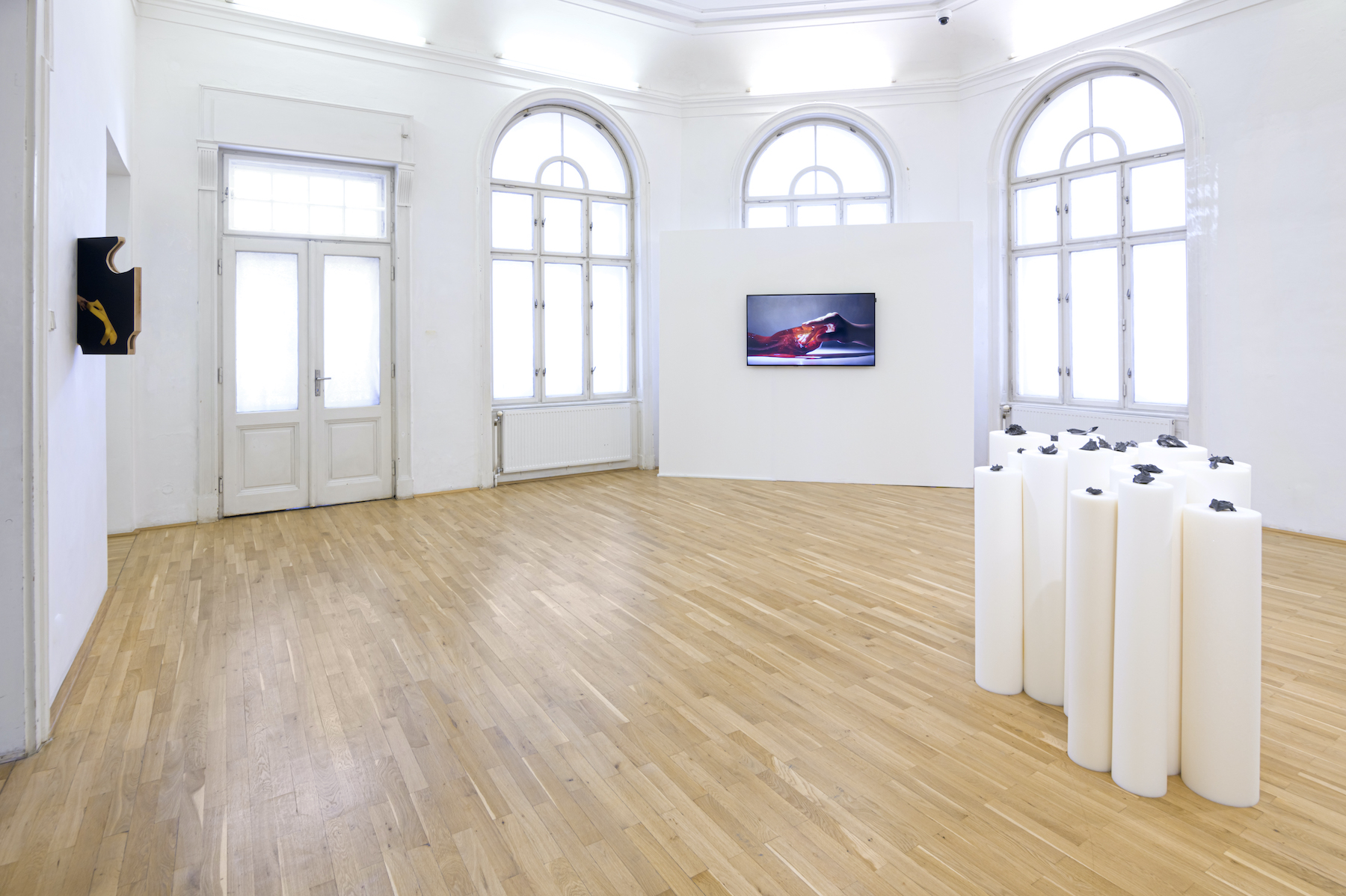
Terézia Tomková – Touch of Society, 2021
Anetta Mona Chişa and Lucia Tkáčová – Things In Our Hands, 2014
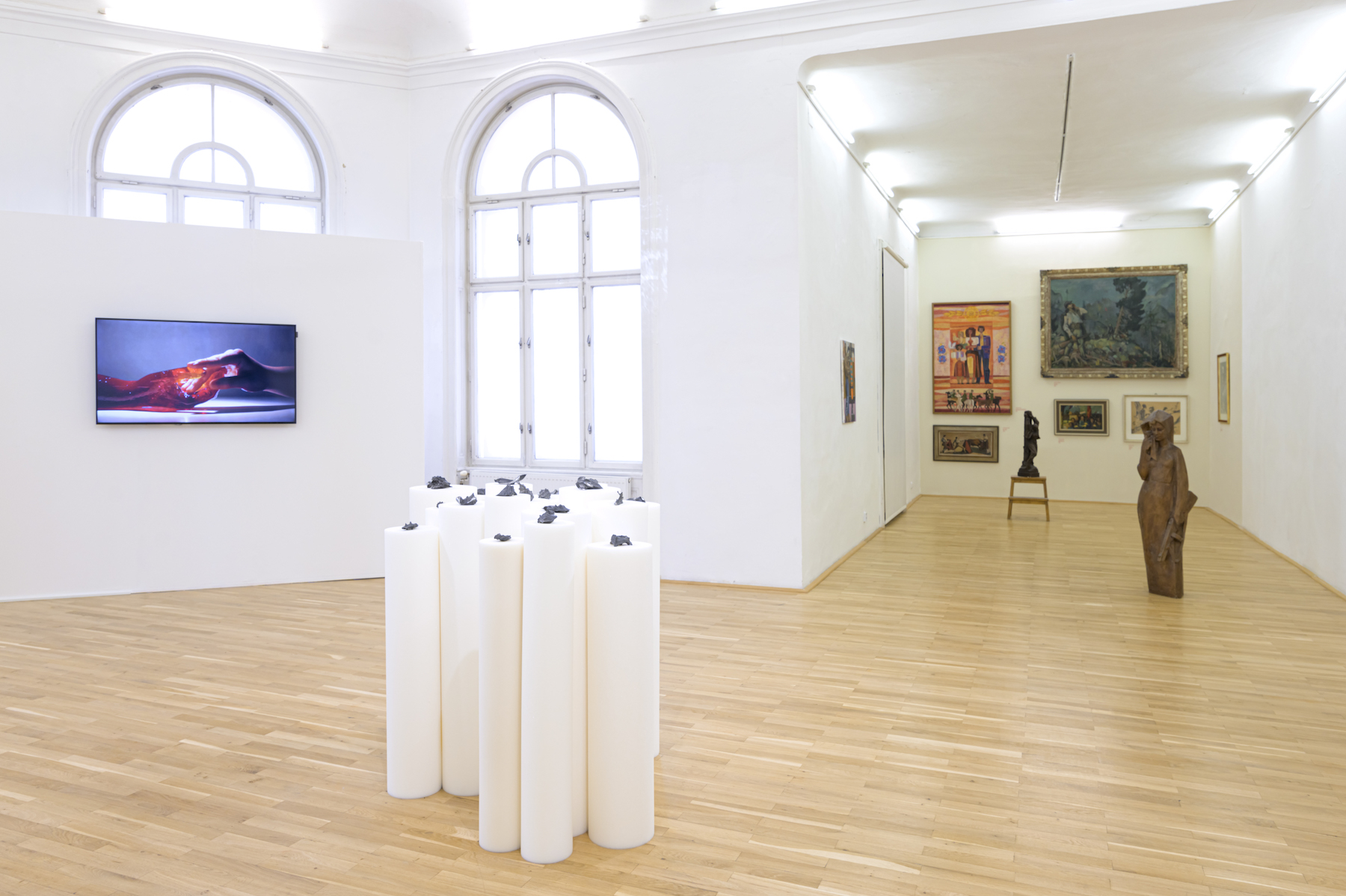
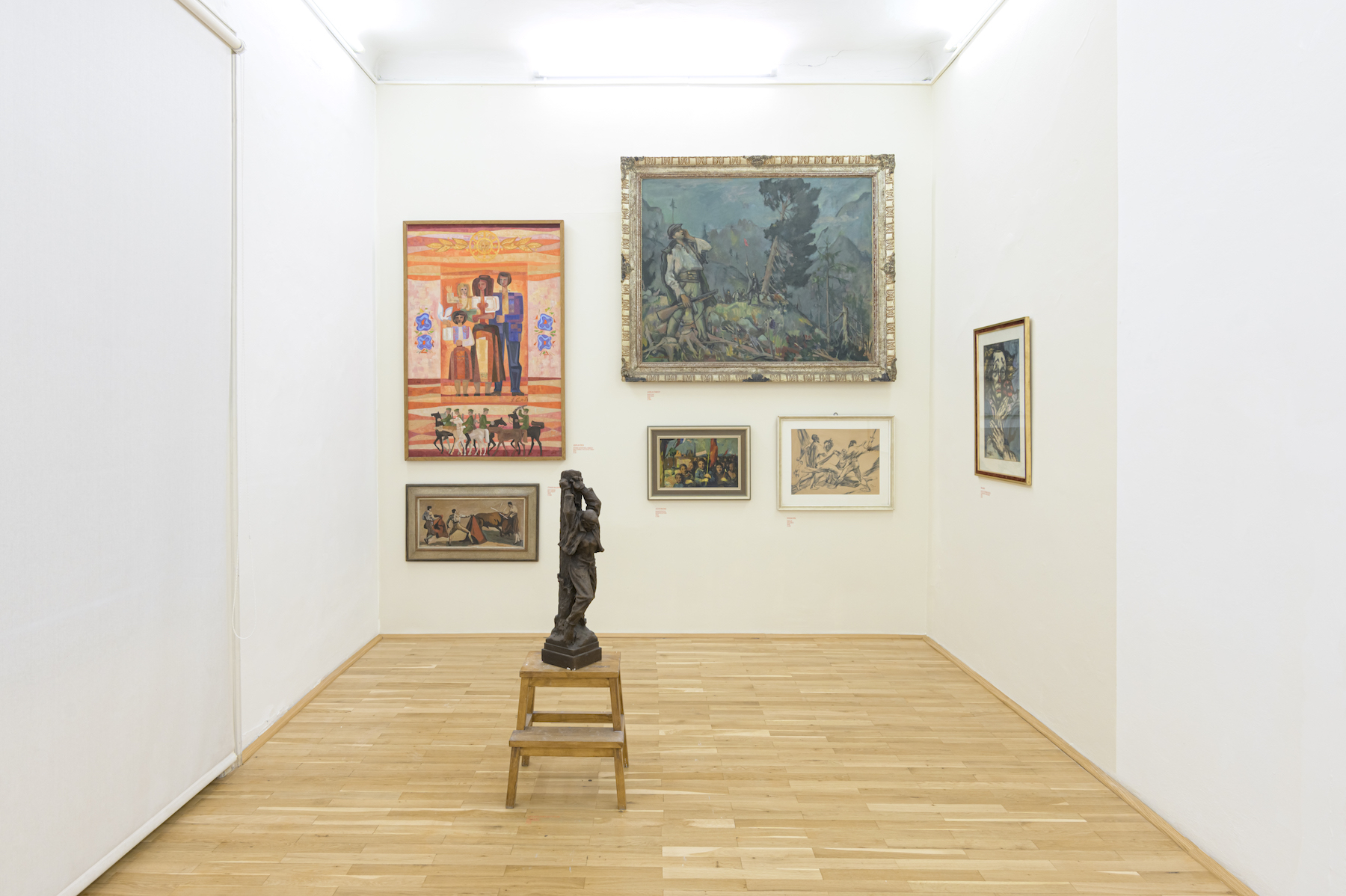
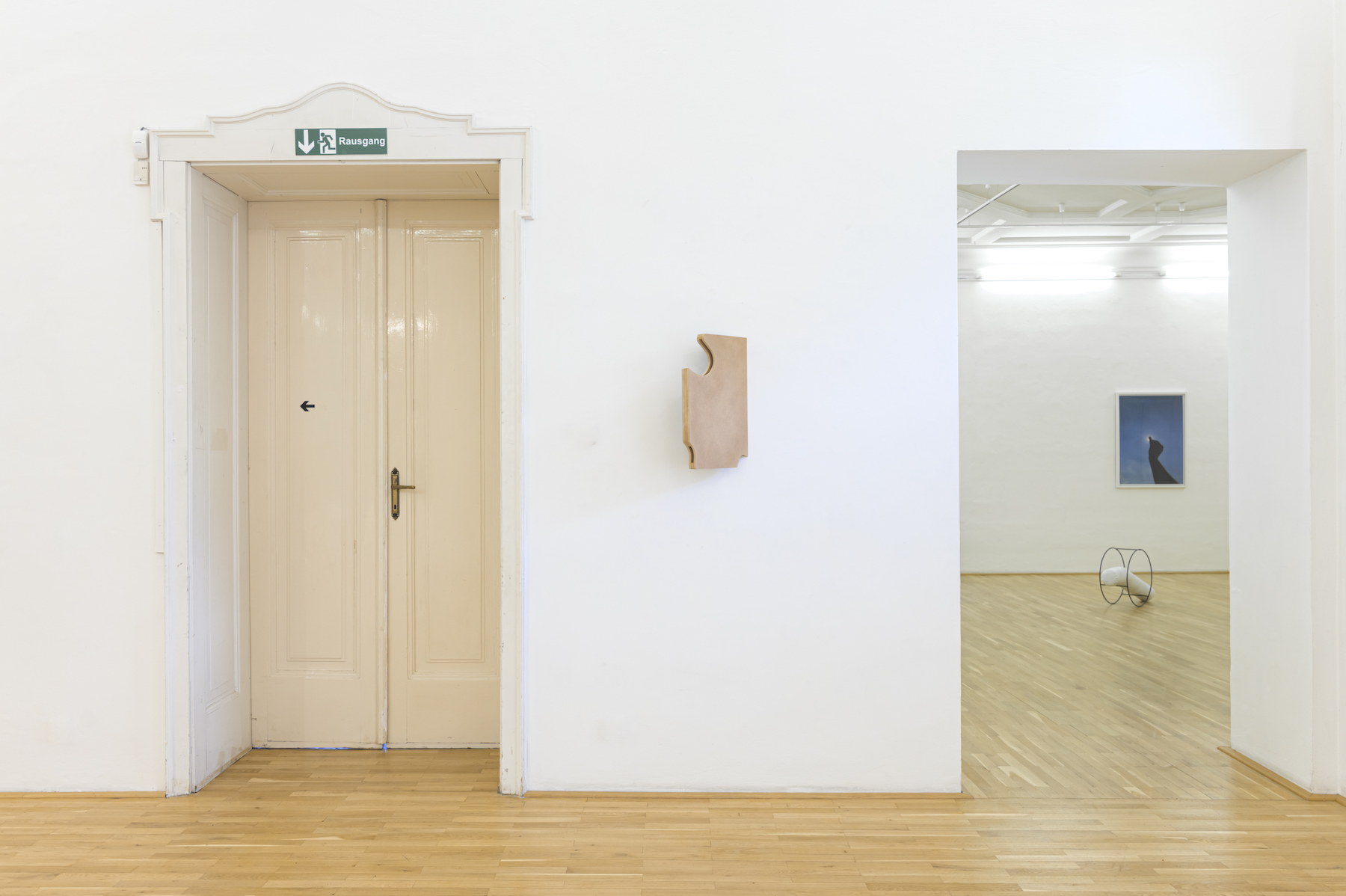
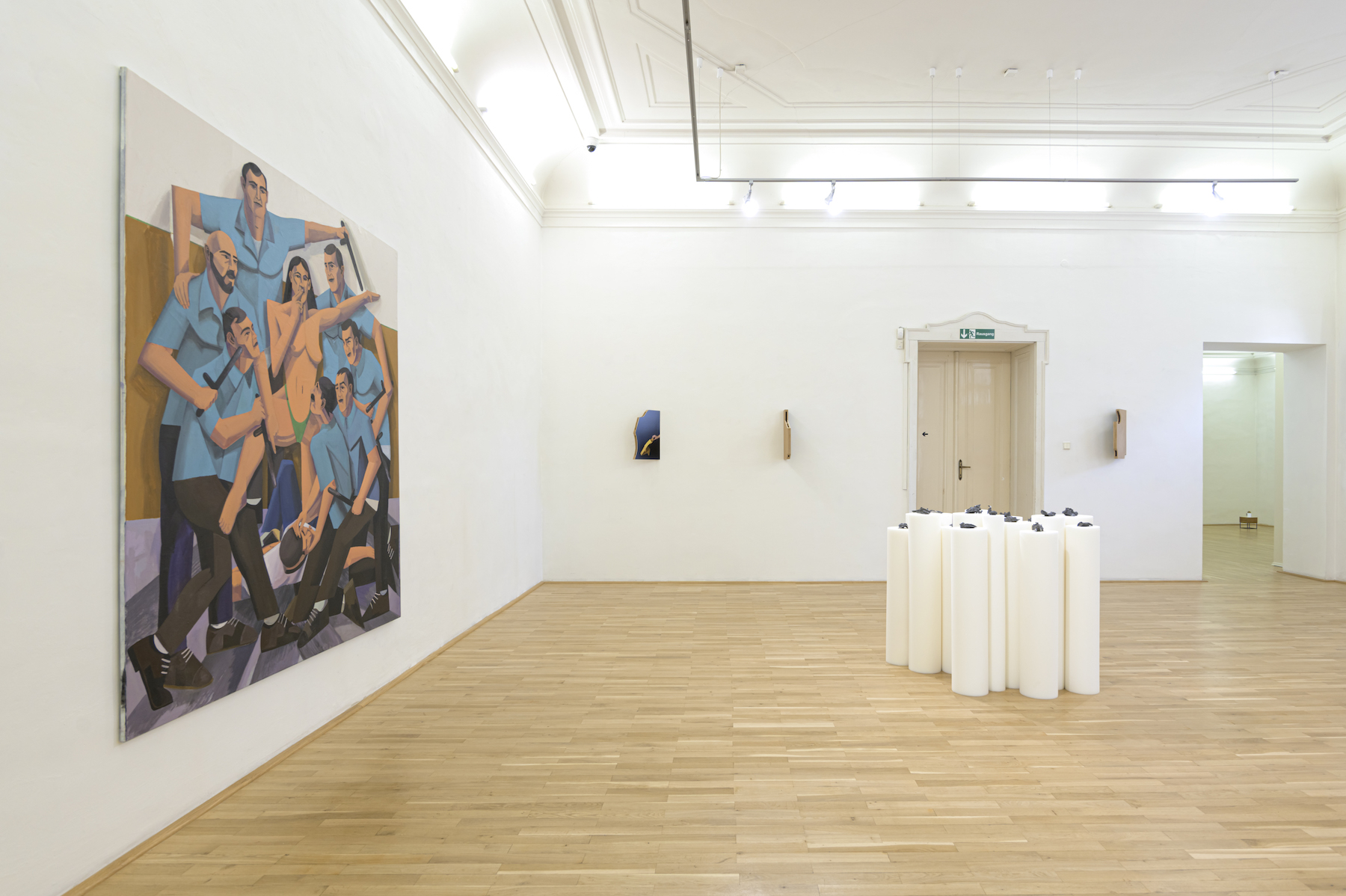
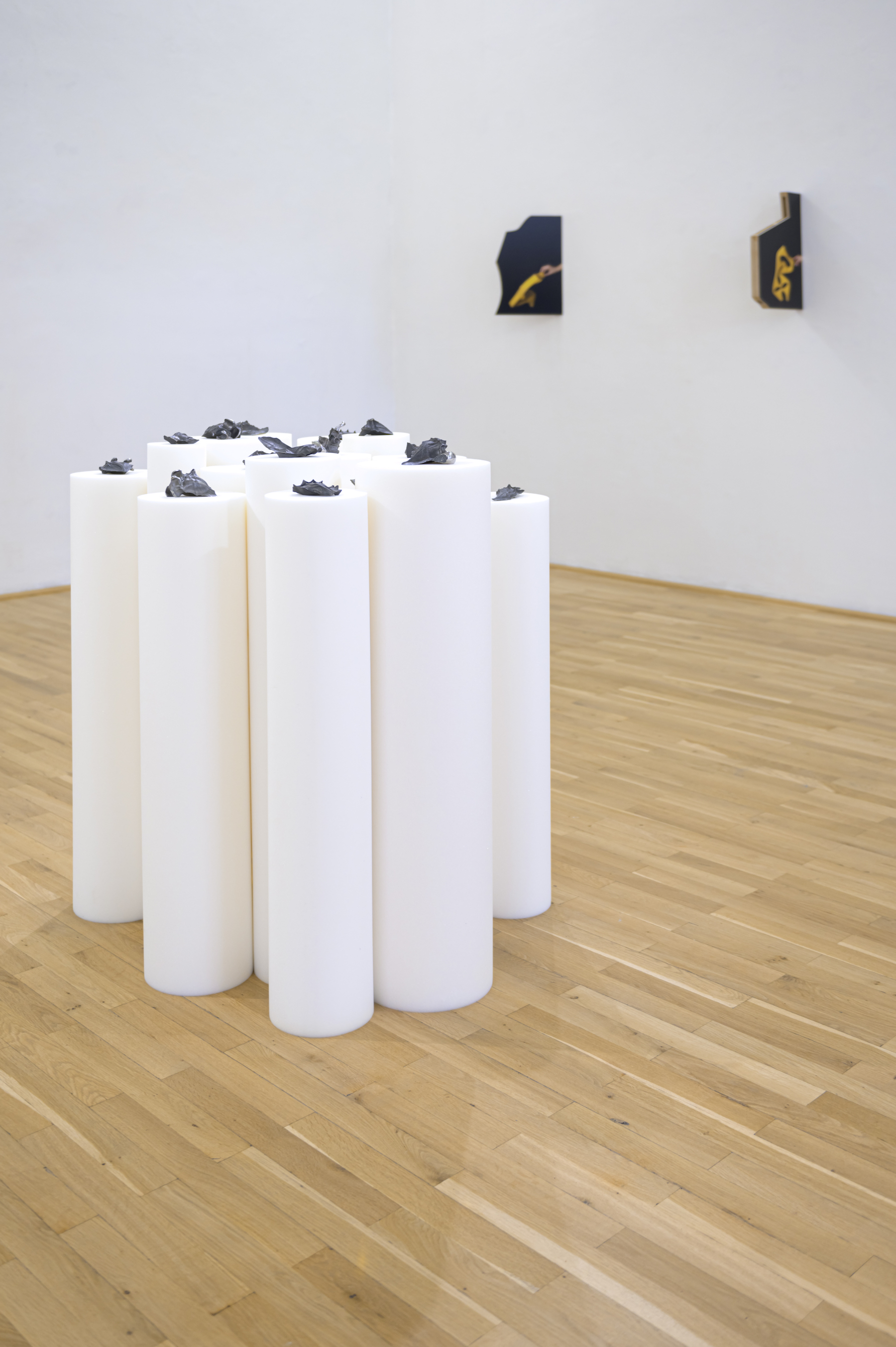








Nika Kupyrova – Otis Rem, 2017 – 2021
Jaroslav Kyša – Work, 2013






Nika Kupyrova – Otis Rem, 2017 – 2021








Leontína Berková – Changing Materiality, 2016
Ján Triaška – Hand Study, 2021



Leontína Berková – Changing Materiality, 2016



Kristián Németh – Derformation, 2011

